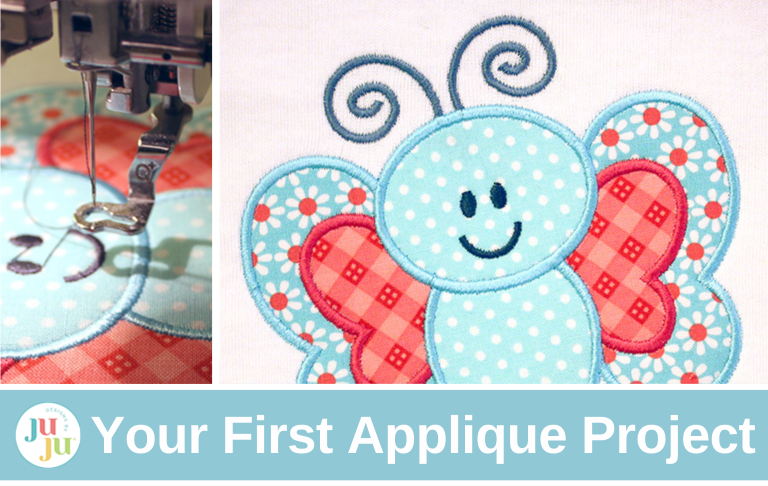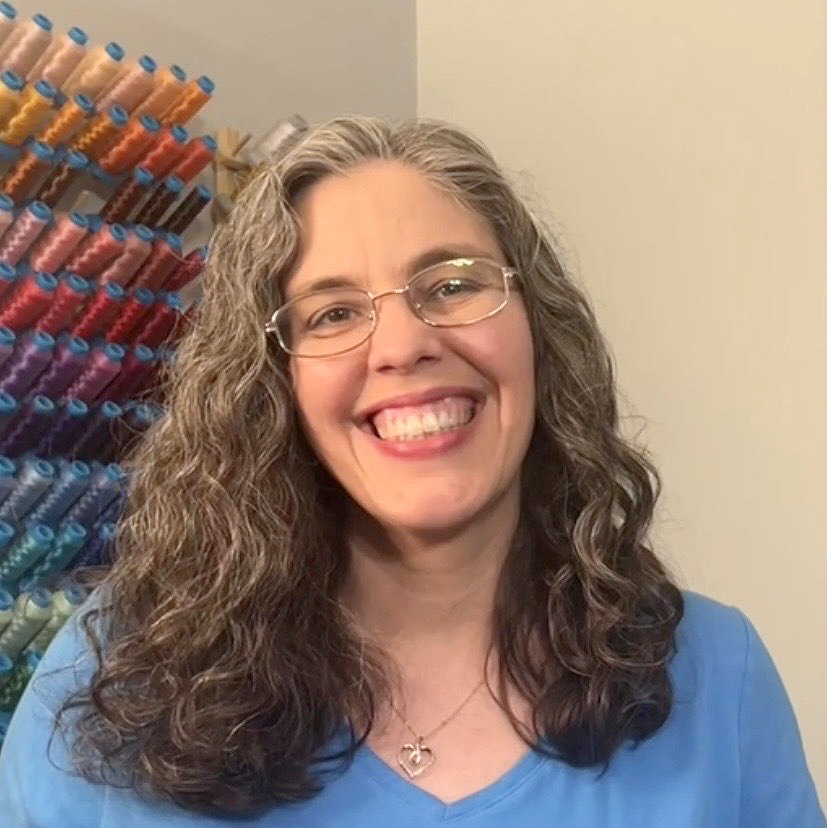Applique Made Easy - Your First Applique Project: A Step-by-Step Guide for Embroidery Beginners
Start your first applique project with our easy step-by-step embroidery guide. Learn how to prep, stitch, and finish a beginner-friendly design.
This is Part 3 of our 8-part series, Applique Made Easy. In this installment, we’re walking you through your very first applique project with a simple, beginner-friendly tutorial. You’ll learn how to stitch a three-fabric design from start to finish, giving you the confidence to tackle future projects with ease. Whether you’re brand new to applique or just looking for a clear, step-by-step guide, this series is here to support you every step of the way. Here’s what you can expect from the full series:
Applique Made Easy Series - Table of Contents
- August 7, 2025 - Applique Made Easy - What Is Applique Embroidery? A Beginner’s Guide to This Fun and Easy Machine Embroidery Technique
- August 14, 2025 - Applique Made Easy - How to Choose the Best Fabrics and Threads for Applique Machine Embroidery Projects
- August 21, 2025 - Applique Made Easy - Your First Applique Project: A Step-by-Step Guide for Embroidery Beginners (You are here)
- August 28, 2025 - Applique Made Easy - Using Mylar and Vinyl in Applique Embroidery: Add Sparkle and Shine to Your Designs
- September 4, 2025 - Applique Made Easy - How to Personalize Premade Items with Applique: Easy Embroidery Gifts and Custom Touches
- September 11, 2025 - Applique Made Easy - Creative Applique Ideas: Adding Personality to Your Embroidery
- September 18, 2025 - Applique Made Easy - Troubleshooting Applique Embroidery: How to Fix Common Problems and Avoid Mistakes
- September 25, 2025 - Applique Made Easy - Complete Guide to Mastering Machine Applique from Start to Finish
If you’ve been curious about trying machine applique but weren’t sure where to start, you’re in the right place! This guide will walk you through your very first applique project step by step, so you can feel confident and excited as you stitch. We’ll be working with a simple three-fabric butterfly design that’s perfect for beginners—and by the end, you’ll see just how easy (and fun!) applique can be. Gather your supplies, follow along, and get ready to create something beautiful!
Supplies
Check out the DBJJ team’s favorite supplies in the Designs by JuJu Amazon store.
- Fabric
- Scissors
- Stabilizer hooped with base item (onesie, T-shirt, etc.)
- Color chart
- Embroidery thread
- Heat-n-Bond® Lite (optional)
- 505® Temporary Adhesive (optional)
- DBJJ design used in this project:
Now that you’ve gathered your supplies, it’s time to get everything ready for stitching. A little preparation at this stage makes a big difference—helping your fabrics lay flat, your stitches look neat, and your final project turn out beautifully. Let’s start by prepping those fabrics so you’re set up for success!
Prepare
Prepare your fabrics ahead of time with a fusible product. This step is not required BUT makes trimming easier, prevents fraying along the edge of the fabric, and adheres the applique fabric to the base item to prevent wrinkles. We use and recommend Heat-n-Bond Lite. Follow the manufacturer’s instructions for fusing to the back side of fabric.
Once it has cooled down, be sure to remove the backing paper.
Refer to the included color chart for your design. In general, our applique designs start with all the placement and tack-down stitches for the fabric portions of the design.
- The pink steps are single running placement stitches showing where the fabric should go.
- The green steps are double running tack-down stitches that attach the fabric to the hooped item.
Please note: often our applique fabric steps are pink/green, but, depending on the design, there may instead be two shades of pink, or red/black. In any case, it is important that these steps alternate colors in the design file so that your machine stops between steps. However, this does NOT mean you need to use pink and green threads for these steps. Instead, pick a neutral color and use it for all placement/tack-down stitches to save time. Once all fabric is tacked down and trimmed, then use different thread colors for the remaining color steps to coordinate with your fabric choices.
Stitching
Stitch Design Step 1: A single running stitch to show fabric placement for the outer wings.
Place the First Fabric: Place your first fabric, making sure the entire placement stitch is covered. (You may wish to use a spritz of spray adhesive to help hold it in place.)
Stitch Design Step 2: A double running stitch to attach the first fabric to the item.
Trim the First Fabric: Remove the hoop from the machine but do NOT unhoop your item. Place your hoop on a flat surface to support the hooped fabric so it remains taut.Trim around the tack-down stitches as closely as you can without snipping them.
Stitch Design Step 3: Return the hoop to the machine and stitch the placement stitches for the inner wings.
Place the Second Fabric: Place your second fabric, making sure the entire placement stitch is covered.
Stitch Design Step 4: This tacks down the second fabric. Then carefully trim around the shapes as before.
Stitch Design Step 5: Return hoop to machine and stitch the placement stitches for the body of the butterfly.
Place the Third Fabric: Place your third fabric, making sure the entire placement stitch is covered.
Stitch Design Step 6: This tacks down the third fabric.Then carefully trim around the shape as before.
At this point with all fabric trimmed, it is good to fuse the fabric in place before moving forward. Depending on the size of your hoop, you may need to use a small travel-size or craft iron.
NOW thread color matters! Pick threads that coordinate with the fabrics you have chosen and what you want for the remaining details. You may follow our color chart for inspiration or do your own thing.
Please note that our satin stitch steps start with a zig-zag underlay to provide a nice foundation for the satin stitches that follow.
Stitch Design Step 7: Satin stitches for the antennae.
Stitch Design Step 8: Satin stitches for the outside wings.
Stitch Design Step 9: Satin stitches for the inside wings.
Stitch Design Step 10: Satin stitches for the body.
Stitch Design Step 11: Face details.
Depending on what model embroidery machine you have, you may need to trim the jump stitches between design elements yourself when the design is completed.
All Done! Sit back and admire your work!
And that’s it—you’ve completed your very first applique project! With just a few fabrics, some simple steps, and a bit of patience, you’ve transformed a blank item into something truly special. Remember, each project will feel easier as you go, and there are endless ways to personalize your designs with different fabrics, colors, and textures. Most importantly—have fun with it! Applique is all about creativity, and every stitch is a chance to make something uniquely your own.
Now it's your turn! We would love to see pictures of your Baby Butterfly applique and what project you use it for! Share them with us in our Designs by Juju Embroidery Blessings Group on Facebook, or use the hashtag #designsbyjuju anywhere on social media.
Next up in our Applique Made Easy series, we’ll explore how to add sparkle and shine to your projects with specialty materials like Mylar and vinyl in “Applique Made Easy - Using Mylar and Vinyl in Applique Embroidery: Add Sparkle and Shine to Your Designs”, posting on August 28. Get ready to take your applique designs to the next level!


